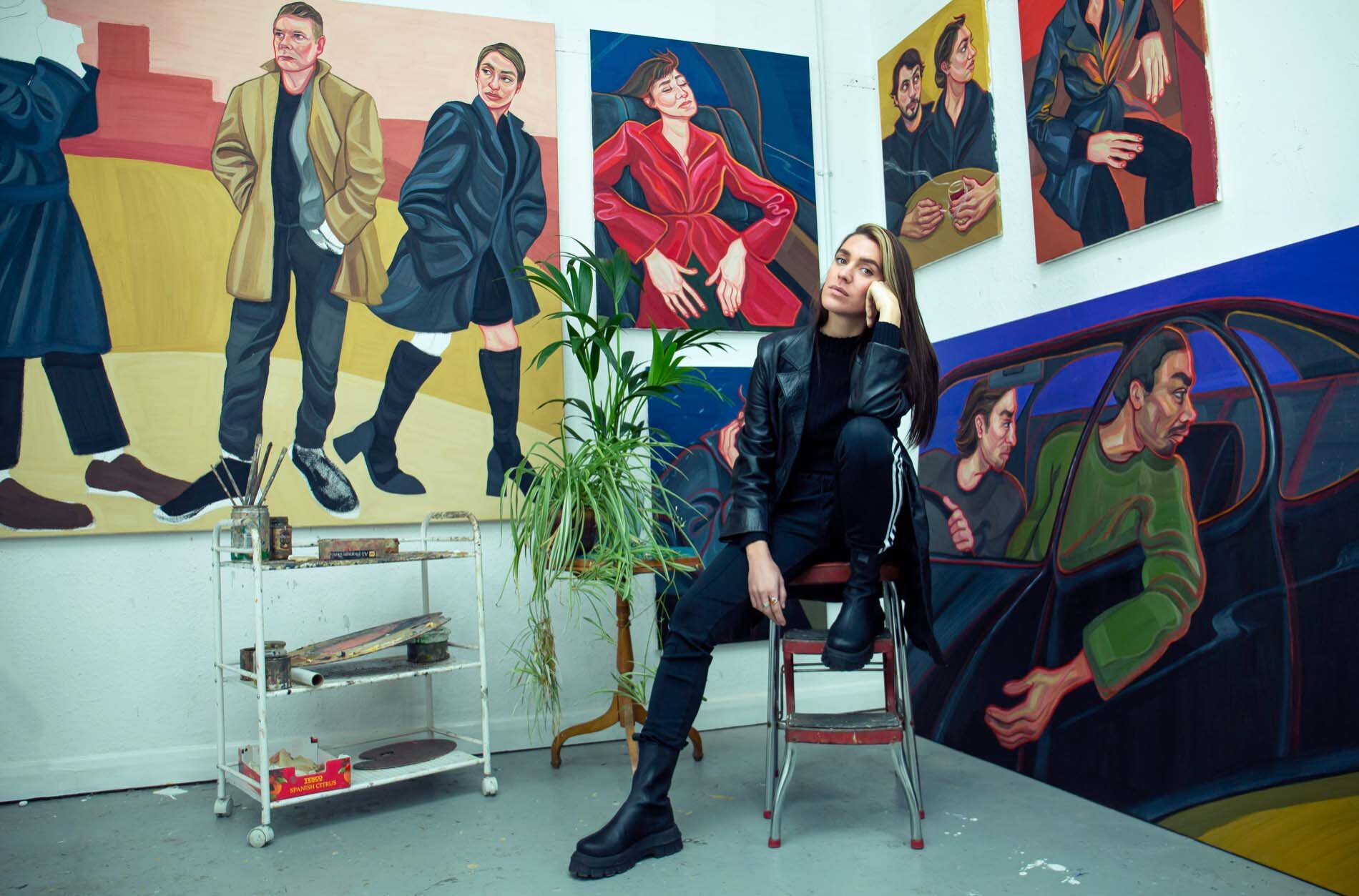Ania Hobson
* Strive for Independence
written Abigail Hart
Ania Hobon’s work in portraiture has been awarded some of the most prestigious honors in the art world for a young artist. Her art is intensely appealing and layered with detail and personality. Form, proportion, emotion, fashion choices, and expressive color palettes combine to create narrative portraiture capturing identity and personality.
Based out of Suffolk in the UK, Hobson holds a degree in Fine Art from Ipswich University and has trained at the Royal Drawing School and the Florence Academy of Fine Art. In 2018, she won the Young Artist award at the BP Portrait Awards hosted by The National Portrait Gallery in London. Her technical skill and fresh take on a very traditional art form like oil on canvas portraiture has made her a rising star in the art world.
Hobson speaks candidly about the pressures of the art world and how outside influences can profoundly affect both the artistic output and the personal lives of young artists. Her experience of second-guessing stylistic choices and navigating commercial interests makes the narratives in her art all the more relatable. Hobson has learned to prioritize self-care and in doing so protects her creativity as well as her mental health.
“The art world can be so exciting but the pressure can take a toll on creativity and your emotional well-being, so finding balance is very important.”
The idea of balance might be the most prized concept in art and art criticism. Many talented painters strive for balance and each painter expresses it in a unique way. Some find balance on the shimmering edge of a gossamer thread; others find a deep symmetry in color and motion; still others use perfectly defined boundaries to create balance through order and control. The balance in Hobson’s pieces is created by layers and layers of details. Her portraits are both of a single moment in time and also capture an entire lifetime. They show both freedom and restraint, truth to form and geometric exaggeration. Through the layers and dichotomies, what comes through is balance in the form of a person, complete and whole.
Hobson’s use of the word ‘characters’ to refer to the people in her paintings, rather than the traditional ‘subjects,’ is indicative of the importance of narrative in her work. The pieces are not busy with detail, but every element tells a piece of a story. A character’s foot or hand bent out of proportion to face away from another character creates space. A chic black sweater elevates a casual pose to show the character’s backstory. Geometric shapes create motion, restlessness and repose in a composition.
.artist talk
Ania Hobson
speaks with
Abigail Hart
first published in:
issue 30, 01/2021
“I want the viewer to be able to read themselves and their feelings into my paintings and draw their own conclusions of what the politics might be.”
Ania Hobson’s portraits tell a complete story with a beginning, middle and end, and every story is unique. Details hint at stories past, present and future and the narratives of her characters become full of life and personality. The beginning could be where the person is now, the middle being where they want to be right now, and the end might be whether they ever get to that place or not. Each story — each portrait — finds the balance of narration and imagination, making the piece infinitely relatable to a viewer.
credit header imageAnia Hobson, 2020



